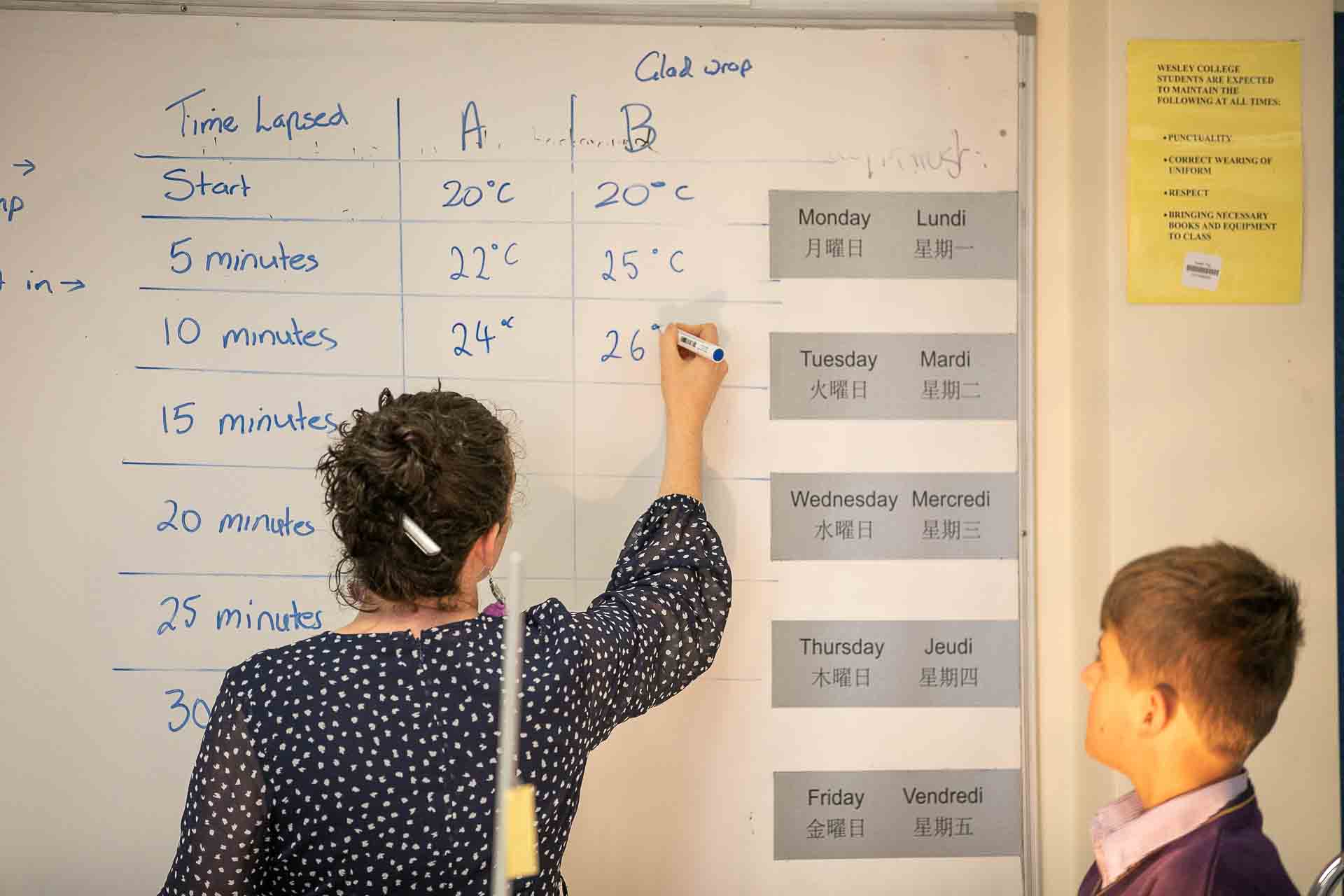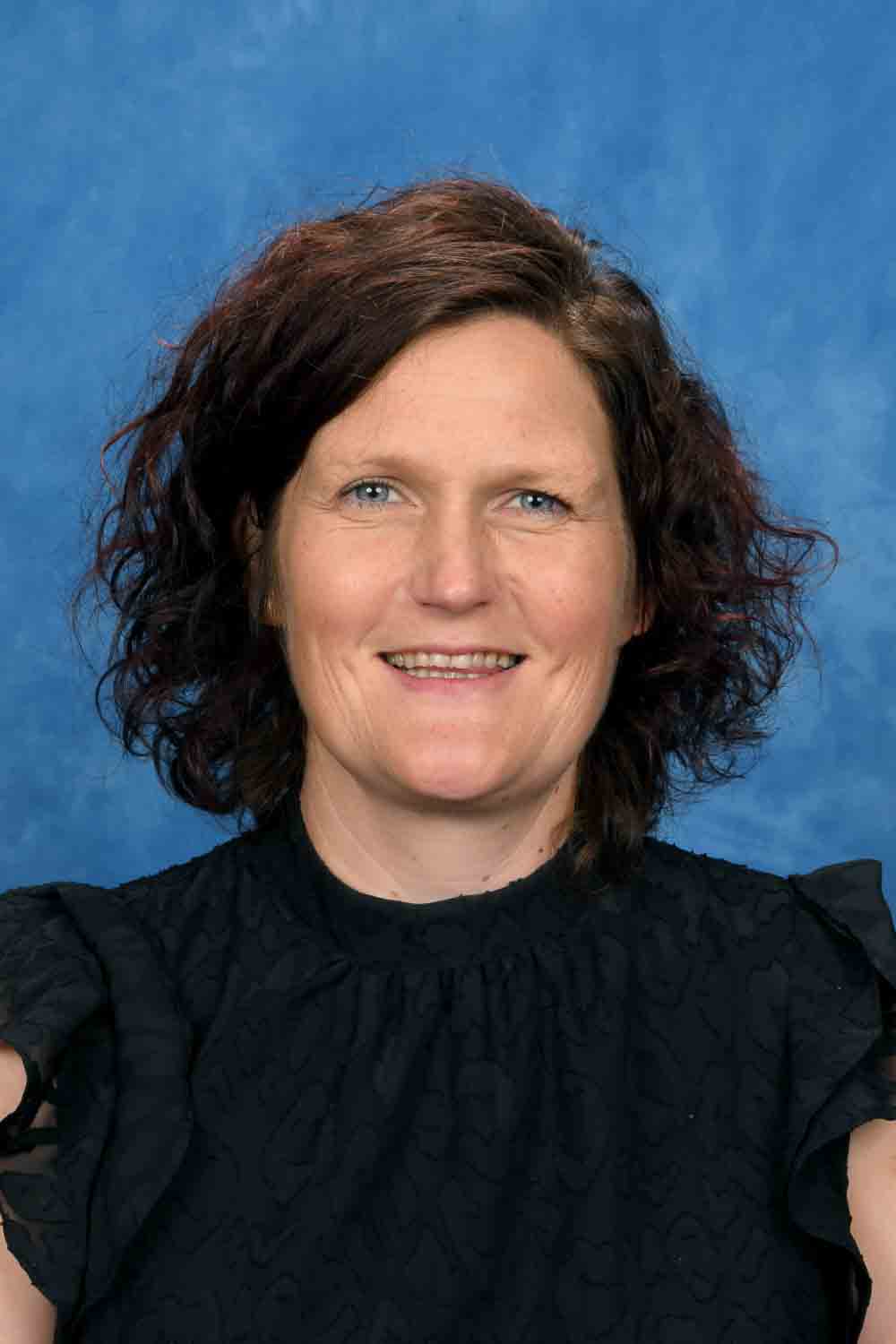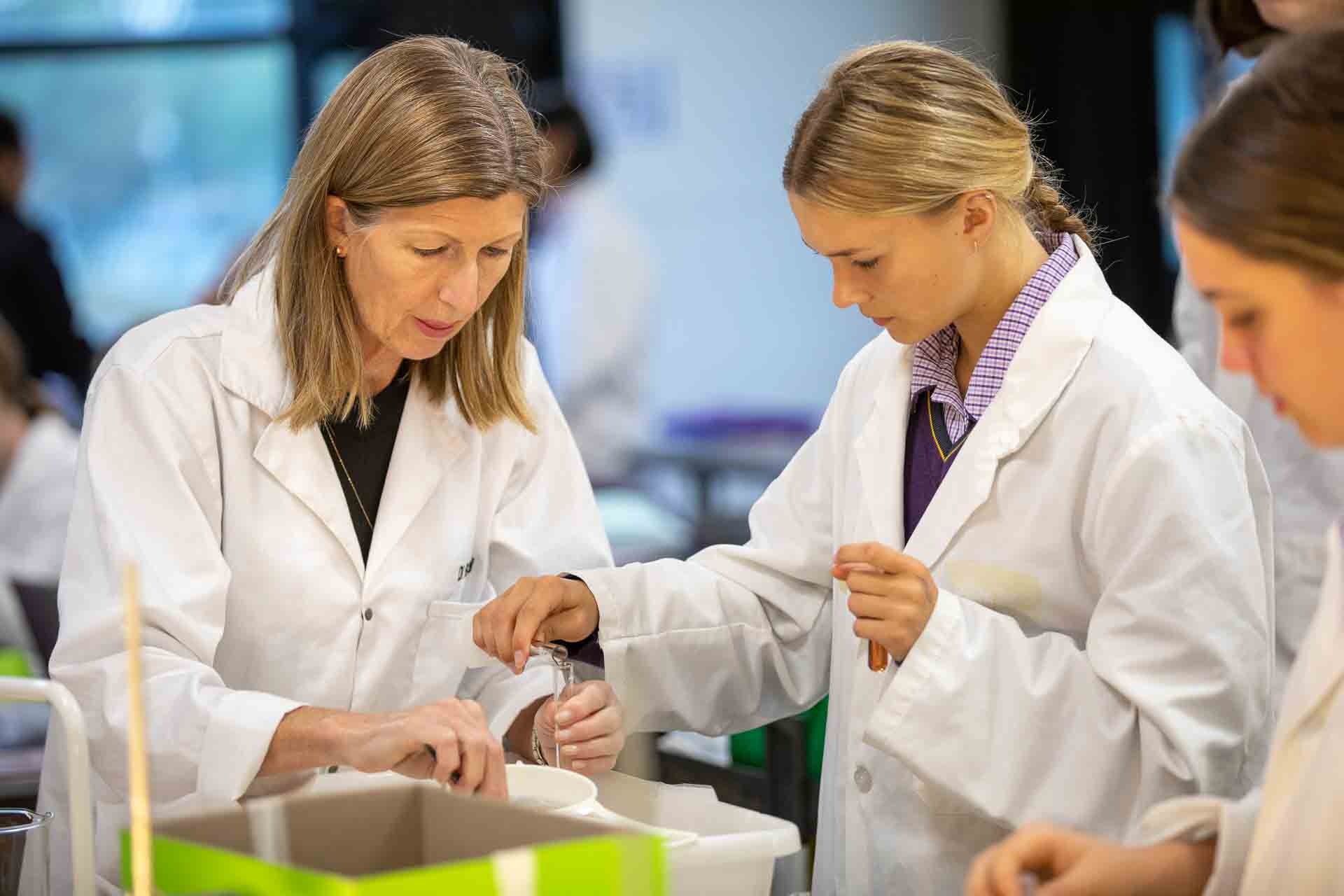<< Back to Lion homepage
The changing face of Science at Wesley
Female role models within the science fields are helping to show students at Wesley that scientists – whose role in solving some of the big problems facing humanity is becoming increasingly more prominent – are just like them.

 More than 15 years ago, when Erin Bruns, Head of the Science Faculty at Glen Waverley Campus, asked Year 7 students to draw a scientist, she’d often see an Einstein-esque character with wild hair, glasses and stains on their lab coat, inevitably holding a bubbling, coloured solution in a test tube. This introductory activity remains, but in the past two years, Erin has seen a surprising change. ‘Only two years ago did I have a class of students in which more than half drew female scientists,’ she says. They didn’t all have wild hair or lab coats, many were working at computers, some in hospitals, and others working collaboratively with other scientists in design and technology. I feel Wesley has provided students with role models across these curriculum areas to help them understand that this is what science is really about.’
More than 15 years ago, when Erin Bruns, Head of the Science Faculty at Glen Waverley Campus, asked Year 7 students to draw a scientist, she’d often see an Einstein-esque character with wild hair, glasses and stains on their lab coat, inevitably holding a bubbling, coloured solution in a test tube. This introductory activity remains, but in the past two years, Erin has seen a surprising change. ‘Only two years ago did I have a class of students in which more than half drew female scientists,’ she says. They didn’t all have wild hair or lab coats, many were working at computers, some in hospitals, and others working collaboratively with other scientists in design and technology. I feel Wesley has provided students with role models across these curriculum areas to help them understand that this is what science is really about.’
That shift in perception has been extremely encouraging to Erin, who was encouraged by her own experiences in the science field to pursue a degree in teaching. ‘I saw the need for students to understand the role that science plays in our everyday lives, but also the impact that scientists are having on both a local and global scale. The work of these individuals has been ground-breaking, and I often wonder if people can see that the gender gap in this industry is decreasing every day.’
Erin grew up in regional Victoria and moved to Melbourne to study medical laboratory technology, with a view that she would work in a laboratory. ‘My first full-time laboratory job was at the Royal Children’s Hospital in the Core Laboratory, which incorporated their biochemistry, haematology and blood banking laboratories,’ she says. ‘The technologies used then (the early 2000s) have changed so much since – advances in scientific instrumentation for diagnosis and research are occurring all of the time.
‘The things I studied at university were so different to what I was using when I started working in Microbiology at St Vincent’s Pathology only a few years later. Being one of the busiest hospitals in Melbourne, I was surrounded by amazing scientists – the majority of whom were female!
‘Encouraged by the experience I gained while working in the industry, I decided to pursue a degree in teaching.’
The Australian Government recognises that Australia’s talent pool is limited by underrepresentation of girls and women in STEM (Science, Technology, Engineering and Maths) education and careers. They found that bias, stereotyping and a lack of female role models are some of the factors which influence girls and women’s decisions to enter and remain in STEM careers. It seems that female role models in STEM are crucial for girls to consider STEM as a career option, and their own perception of whether they could work in STEM. It seems boys also benefit from the perspective and experience that these diverse voices can offer too.

During Science Week in August this year, students met astrophysicist Professor Rachel Webster AO FAA in an online workshop. A past parent and current member of the Wesley College Council, Rachel is the second female in Australia to become a physics professor and has had a stellar 20-year career teaching and researching astronomy.
While Rachel is an astronomer, she encouraged students to see the interconnectedness of the world, and to consider how multidisciplinary scientific study has become. (See the article on Rachel next page.)
Wesley is fortunate that many staff have real experience in the science industry and a good representation of both male and female STEM teaching staff. It provides great context for students, as Erin explains. At its core, ‘teaching students to harness their questions and use these to hypothesise, experiment and inform others is what being a scientist is all about – whether that be in a school, laboratory or industry.’
‘The International Baccalaureate curriculum focuses on the need for international mindedness and collaboration and encourages students to become risk takers. Our focus in class is often on the need to work collaboratively with each other in designing and testing methods for their experimental questions. We share our findings and discuss the limitations of design to better our overall understanding. We need to model the role that human errors and serendipity play in scientific discovery. If it wasn’t for these things, Fleming would never have discovered the huge benefits of penicillin in fighting bacterial pathogens!’
This year, Wesley College will introduce a landmark new scholarship, The Rennie Coutts STEM Scholarship for Girls, designed to provide greater opportunities for girls with an interest in STEM, and ultimately, a rebalancing of the future STEM industry talent pool.
‘With the introduction of this scholarship, and the significant number of female role models in our Science faculties, we are well-equipped to help nurture young female scientists and provide them with the knowledge and understanding they need to succeed in a rapidly changing world,’ Erin said.
Female mentors will engage with scholarship recipients - even more role models who are at the forefront of technological gains in scientific knowledge, research and our understanding of the changes taking place every day.
Applications for The Rennie Coutts STEM Scholarship for Girls are now open.